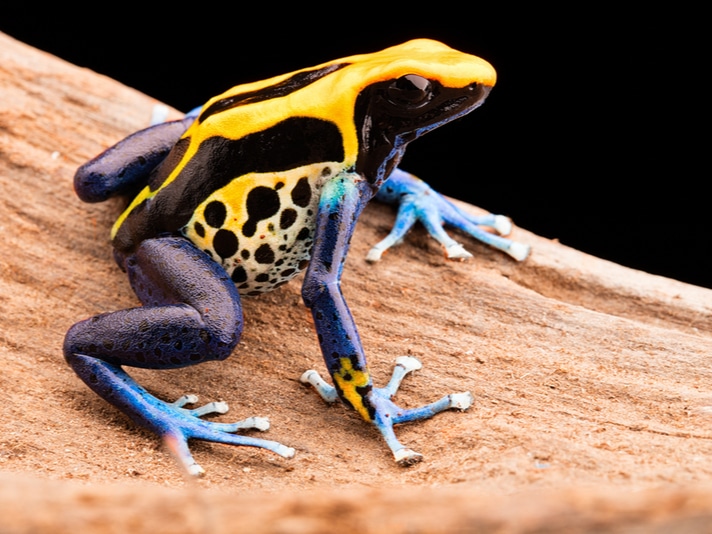The varying color patterns of dyeing dart frogs affect how potential predators see the frogs.
Those beautiful dart frogs in your terrarium are colored for a reason, but did you know that some species’ colorations vary from frog to frog and those colorations in the same species may serve different purposes?
Dyeing dart frogs (Dendrobates tinctorius) are known for their yellow and black coloration that screams poisonous to those animals that would want to eat them, but some frogs of this species have coloration patterns that vary widely from individual to individual and that these color differences and how the frogs move about affect how potential predators see these frogs.
Read More
Poison Frogs Deposit Their Brood In Dangerous Waters
In a study published in the journal Biology Letters, scientists with Deakin University in Geelong, Australia, spent time in Camp Pararé, Les Nouragues Reserve, French Guiana studying 25 female frogs and 14 male frogs each for two hours, recording the direction the frogs went and how far.
They determined there were two groups of frogs, 64 percent that moved about randomly and 36 percent that moved in a single direction. What is more interesting is the fact that the frogs moving about in a more focused direction have elongated color patterns and the frogs moving about more randomly have more scattered color patterns. The frogs that moved in a single direction also moved three times faster than the scattered-colored frogs. The scientists also pointed out in their paper that there was no difference in the number of males and females in each group.
The scientists, led by Bibiana Rojas of Deakin University in Geelong, Australia, (Rojas’ previous work, with the University of Jyväskylä in Finland, studied male dyeing poison frogs and where they deposit tadpoles) believe that the different color patterns make it more difficult for potential predators to recognize the warning signal and the frogs differing movements affect how the predators see the frogs.
“This pattern–movement combination might create the illusion of a static pattern or a pattern with a greatly reduced speed that affects predators’ abilities to track the trajectory of moving individuals and predict their attack angle,” the scientists wrote in their paper. “This may be more pronounced when movements occur at a higher speed and over longer segments, as in these frogs.”
The full paper can be read here.
John B. Virata currently keeps a ball python, two corn snakes, a king snake, and two leopard geckos. His first snake, a California kingsnake, was purchased at the Pet Place in Westminster, CA for $5. Follow him on Twitter @johnvirata


